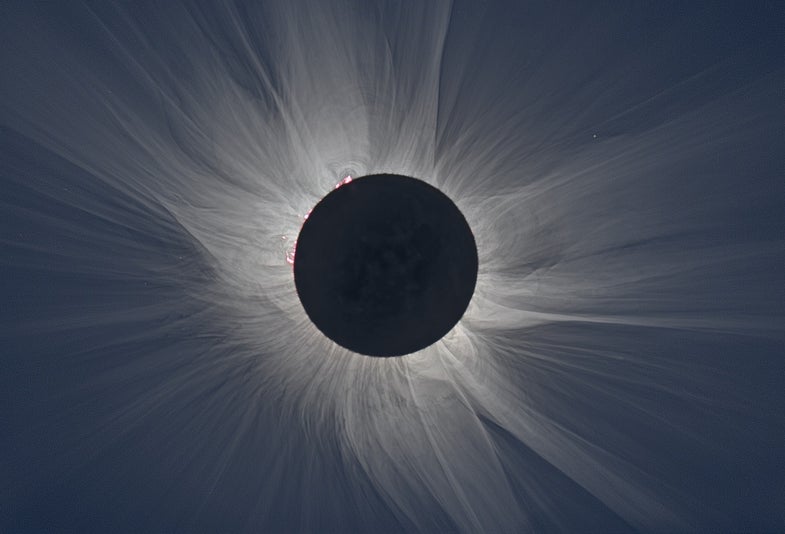Can’t find safe eclipse glasses? Make your own eclipse projector instead.
Don't settle for the blurry cardboard box version.

To watch the solar eclipse on August 21, you could invest in a pair of eclipse glasses. But high demand means high prices—and some of the only reputable retailers are sold out entirely. For a cheaper option, build a pinhole camera, which projects a harmless (but still delightful) image of the sun onto a blank surface.
Making a pinhole camera can be as simple as punching a hole in a piece of paper: The sun projects through the gap to throw an image onto another surface (like a second sheet of paper). By adjusting the position of the pinhole, you can focus the image, although you can’t exactly get an HD picture. Turning a cardboard box that fits over your head into a pinhole projector will reduce light interference and give you a better closeup, but that’s not an experience you can share with your friends.
A pair of binoculars, however, can project and magnify an image all at once, making it the perfect choice for your eclipse-watching party. Here’s how:
Tools and materials
- Pencil
- Binoculars
- Two pieces of cardboard
- Box cutter
- Tripod
- Duct tape
- Epoxy and a 1/4-inch 20 T-nut (optional)
- Aluminum foil
Instructions
- With a pencil, trace the outline of the binocular’s magnifying lenses (the lenses you point at a target) onto the center of one piece of cardboard. Cut out these circles and discard them. You should now be able to poke the binoculars through the middle of the cardboard.
- Attach the binoculars to the tripod. You can either tape them in place, or screw them onto the tripod’s plate. For the latter option, you’ll need a pair of binoculars with a tripod attachment, or you’ll first have to epoxy a 1/4-inch 20 T-nut onto the binoculars.
- Place the tripod into a position where you can point it at the sun.
- Fit the cut cardboard over the binoculars so it casts a shadow. The light that filters through the binoculars should now project two bright dots onto the ground. Cover one of the lenses with duct tape or aluminum foil, leaving only one dot. Use duct tape to seal up any space between the outer edge of the uncovered lens and the cardboard.
- Place the second piece of cardboard so that the projected dot from the binoculars lands on it. Adjust the focus of the binoculars, and the relative positions of the cardboard and the tripod, until the dot is sharp and clear. This is the projected image of the sun. Just don’t leave the binoculars pointing at the cardboard for more than a few minutes—focused light can set the paper on fire!
- As the moon passes over the sun, watch the eclipse happen in the projection (instead of staring directly up and risking your eyeballs). Happy viewing!
For more, check out the video, above. You can also subscribe to Popular Science on Youtube.